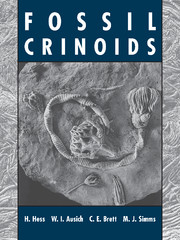Appendix II - Glossary of Rocks
Published online by Cambridge University Press: 10 November 2010
Summary
Sediments can be classified according to chemistry [e.g., silicates (clay minerals, quartz), carbonates], grain size (clay, silt, sand, pebbles, boulders) or components (mud content, fossil fragments, ooids).
Clastic (‘fragmented’) sediments are derived from the erosion of rocks.
SILICICLASTIC SEDIMENTS
These sediments are erosional products of igneous and metamorphic rocks in the first instance. They are composed of quartz or clay minerals. They are classified according to grain size:
Clay (< 0.002 mm or 2 μm) →hardened into claystone. Fissile claystones are called shales; fissility results from horizontal alignment of the clay minerals during deposition, but mainly during compaction (example: Posidonia Shale).
Silt (4–63 μm) →hardened into siltstone.
Sand (0.063–2 mm) →hardened into sandstone, frequently with cement of calcium carbonate.
Pebbles (2–64 mm).
Boulders (>64 mm).
Some of these sediment terms have been incorporated into modern carbonate rock nomenclature. Clay and silt are the components of mud; siltstones, claystones and shales are therefore varieties of mudstones, also called argillaceous rocks. Most sedimentary grains of silt and sand resulting from the weathering of terrigenous rocks are composed of quartz. Slate is a finergrained siliciclastic rock in which aligned platy minerals produce fissility like that of shale. The mineral alignment of slate results, however, from deformation pressures through tectonic movements rather than from orientation of the clay particles during sedimentation (example: Hunsrück Slate).
- Type
- Chapter
- Information
- Fossil Crinoids , pp. 247 - 248Publisher: Cambridge University PressPrint publication year: 1999



